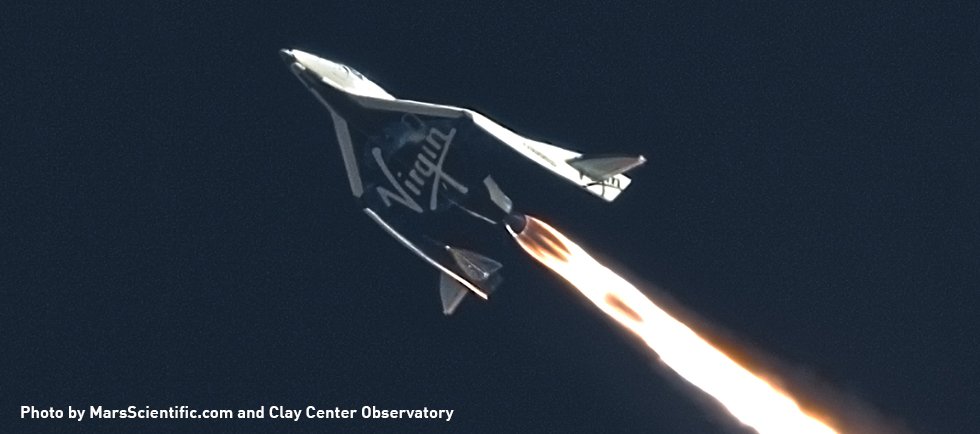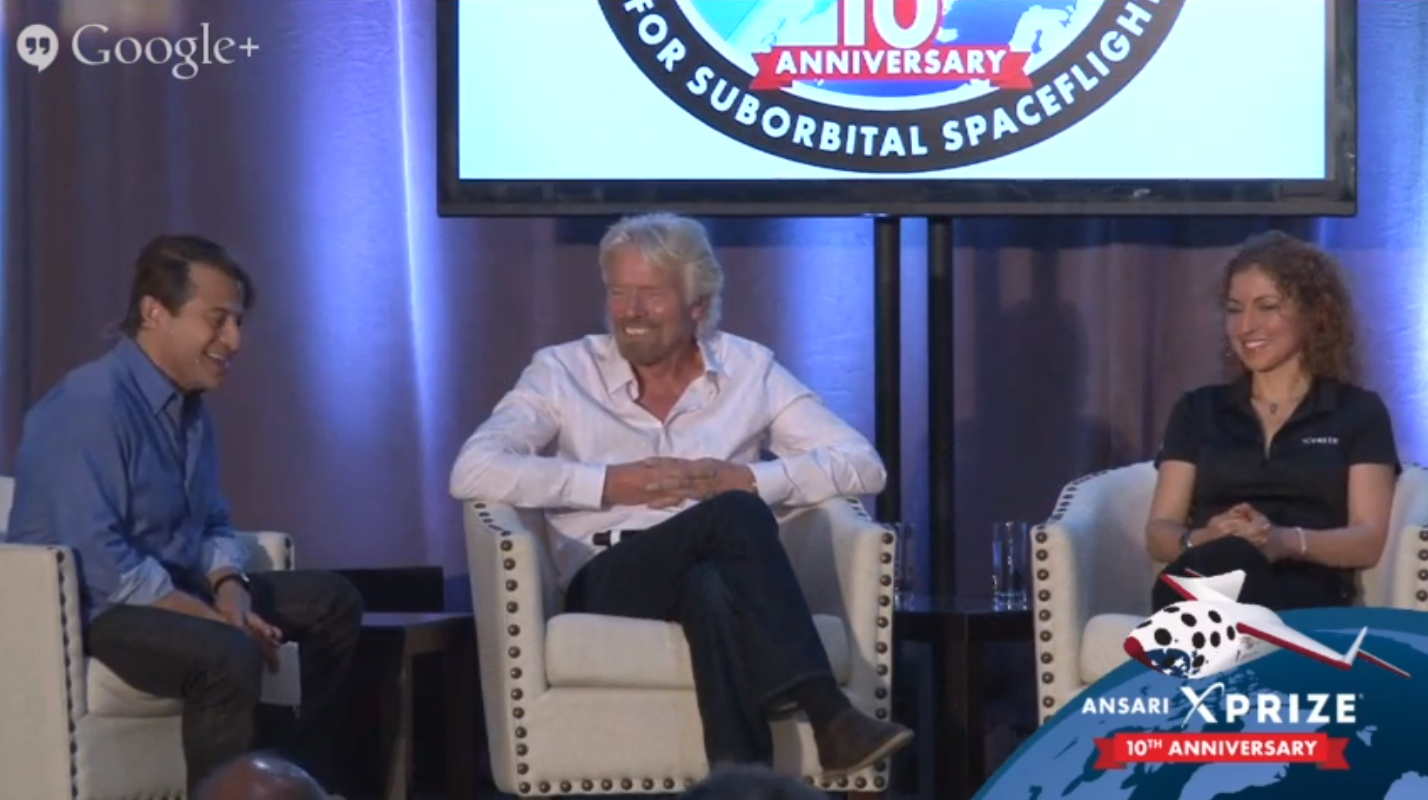Virgin Galactic 'On the Verge' of Private Space Launches, Richard Branson Says

One decade after a huge milestone in commercial spaceflight, British billionaire Sir Richard Branson thinks his spaceflight company Virgin Galactic's spaceship, is "on the verge" of another breakthrough in the industry.

Virgin Galactic's road to space began 10 years ago on Saturday (Oct. 4) when aerospace designer Burt Rutan's company Scaled Composites, the builders of SpaceShipOne, launched the suborbital spacecraft 62.5 miles (100 kilometers) into the space for the second time in two weeks. That feat by SpaceShipOne won the $10 million Ansari X Prize for a reusable suborbital spaceflight vehicle.
Virgin Galactic has been testing SpaceShipTwo, the successor to SpaceShipOne, to become the world's first private spaceliner. Last January, the suborbital spacecraft launched on its third supersonic test, but did not aim for space. But that, Branson said, is closer than ever. [See the amazing SpaceShipTwo test flight photos]
"We have a fantastic team, and I'm not going to say any dates … but we're on the verge," Branson said during a webcast paying tribute to the 10-year-anniversary of the Ansari X Prize.
A seat aboard the six-passenger SpaceShipTwo currently costs $250,000. So far, Virgin Galactic has sold more than 700 tickets. Initially in 2004, Branson expected that SpaceShipTwo would be flying customers by 2007.
"It's been a great voyage," Branson said. "It has taken longer than we thought."
Virgin Galactic has mounted multiple rocket-powered test flights, and some spaceflight experts don't necessarily think the delays should be seen as too problematic.
Get the Space.com Newsletter
Breaking space news, the latest updates on rocket launches, skywatching events and more!
"They're doing it the right way," Michael Lopez-Alegria, president of the Commercial Spaceflight Federation and a former NASA astronaut, told Space.com of Virgin Galactic. "They're taking their time. They're being safe. They're making sure they have all the t's crossed and the i's dotted."
SpaceShipTwo and Virgin Galactic are a direct result of SpaceShipOne's success in 2004. Branson licensed SpaceShipOne's technology for Virgin Galactic, leading to the creation of SpaceShipTwo, a commercial spaceship that could begin flying paying customers next year.
"I think it [the Ansari X Prize] was tremendously important," George Whitesides, CEO of the commercial spaceflight company Virgin Galactic, told Space.com in an earlier interview. "It showed that a small, nongovernment team could carry off a major human spaceflight program. And that was a really important existence proof for a lot of the work that has come in those intervening years."
While the Ansari X Prize was the first competition launched by the X Prize Foundation, it hasn't been the last. The foundation has other X Prizes currently up for grabs. The Google Lunar X Prize will award a $30 million grand prize to a private spaceflight team that lands on the moon and performs a series of tasks on the surface by December 2015.
The second X Prize — called the Qualcomm Tricorder X Prize — will be awarded to anyone that can create a medical tricorder: a device from "Star Trek" that could diagnose a person's medical ills wirelessly. The winning gadget needs to be able to diagnose a set of 15 diseases, according to X Prize officials.
Follow Miriam Kramer @mirikramer and Google+. Follow us @Spacedotcom, Facebook and Google+. Original article on Space.com.
Join our Space Forums to keep talking space on the latest missions, night sky and more! And if you have a news tip, correction or comment, let us know at: community@space.com.

Miriam Kramer joined Space.com as a Staff Writer in December 2012. Since then, she has floated in weightlessness on a zero-gravity flight, felt the pull of 4-Gs in a trainer aircraft and watched rockets soar into space from Florida and Virginia. She also served as Space.com's lead space entertainment reporter, and enjoys all aspects of space news, astronomy and commercial spaceflight. Miriam has also presented space stories during live interviews with Fox News and other TV and radio outlets. She originally hails from Knoxville, Tennessee where she and her family would take trips to dark spots on the outskirts of town to watch meteor showers every year. She loves to travel and one day hopes to see the northern lights in person. Miriam is currently a space reporter with Axios, writing the Axios Space newsletter. You can follow Miriam on Twitter.









